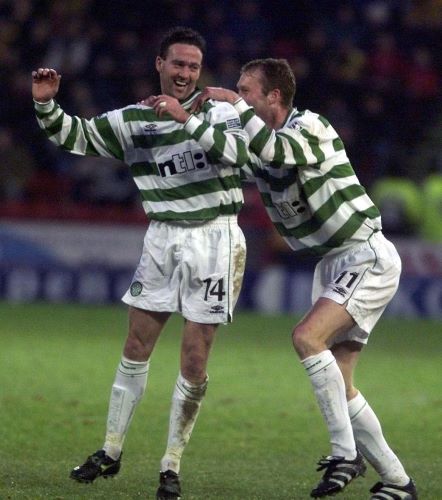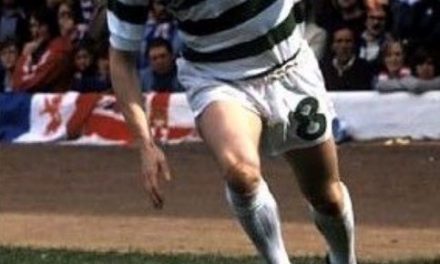In mid-December 1999, as the twentieth century was coming to a close, John Barnes took his Celtic team north to Pittodrie to face Aberdeen. November had been a bad month for the Celts with highly damaging defeats to Lyon, Rangers and, worst of all, Motherwell, to cast a shadow over Barnes’ ability as Celtic manager. December had saw a marked improvement with the side reaching the semi-finals of the league cup with a win over Dundee and a resounding 4-0 league win over Hibs.
Aberdeen also went in to this game in fine fettle after a 1-0 win over Rangers at Pittodrie in a league cup quarter final tie, although they would be meeting Celtic with a certain level of apprehension as Celtic had already defeated them comprehensively by 5-0 and 7-0 earlier in the season.
There was great discussion at this time amongst Celtic fans over the merits of Barnes’ controversial new 4-2-2-2 system. This certainly led to entertaining games but the feeling was that this formation left the team vulnerable and exposed at the back and a lack of wide players was also said to be a fault in the system. The one thing Barnes could not account for was the horrific injury to the brilliant Henrik Larsson in October and the Celtic manager had turned to his old England team mate, the 36 year old veteran striker, Ian Wright to replace Larsson for the short term.
If Aberdeen thought matters were to improve against Celtic then their hopes were dashed in the 20th minute when Paul Lambert fired a glorious shot high into the net from the edge of the area after a one-two with Mark Viduka. Minutes later Stephane Mahe made it 2-0 when Eyal Berkovic had set up the Celts’ full back with a fine through ball and with Celtic’s huge psychological advantage from the previous games, the contest was as good as over. It was now a case of how many Celtic would score.
In the second half Celtic improved as Aberdeen got worse. The mercurial Lubo Moravcik scored one of the goals of the season when he ran down the right had side from deep then cut in and lashed a glorious left foot shot past Jim Leighton. This was a goal which would stay long on the memory of those who witnessed it and was an outstanding piece of play even for someone of Moravcik’s remarkably high standards.
Leighton’s day went from bad to worse in 75 minutes when his blunder allowed Viduka an easy finish with the big Australian striker enjoying one of his better games in a Celtic shirt. In 81 minutes Celtic scored another outstanding goal which had their fans in raptures. Morten Wieghorst showed delightful skill in performing a ‘Rabona’ cross to the back post for Regi Blinker to volley the ball home. Aberdeen’s misery was finally complete when Wright made it 6-0 with a shot which squirmed past Leighton. As Aberdeen’s fans turned on their dispirited team Leighton was said to have given the ‘Harvey Smith’ sign to the Dons’ fans in frustration, or as we Glaswegians would refer to it. ‘the Vicky.’
This 6-0 romp now meant that Celtic had taken 18 goals from Aberdeen, with none conceded, in just three matches. It was difficult to believe it was only a decade before that Celtic could rarely win a game at Pittodrie when the likes of Willie Miller, Alex McLeish and Gordon Strachan were in their pomp in their famous red and white Adidas strips.
With Christmas only days away and fast approaching, things looked much rosier for John Barnes and Celtic after their return to form and the devastating manner of their victory. With Viduka, Moravcik, Berkovic and Lambert all on top form the future looked bright as the Celtic fans sang their songs of victory whilst departing Pittodrie on this cold, dark, winter’s night.
No one could have anticipated at that time that, just five games and eight weeks later, John Barnes reign as manager would end in ignominious failure after an infamous Scottish Cup defeat to inverness Caley Thistle at Celtic Park. Barnes, despite some hopeful signs, was ultimately found to be a false prophet, proving a stark indication of how quickly things can change in football.





